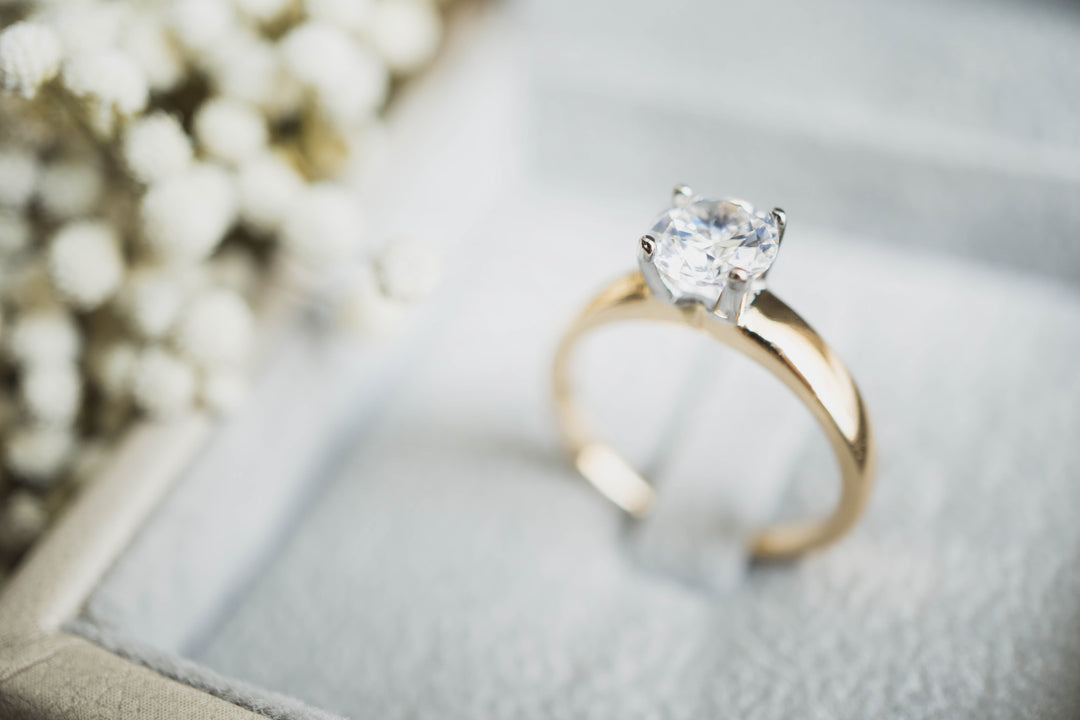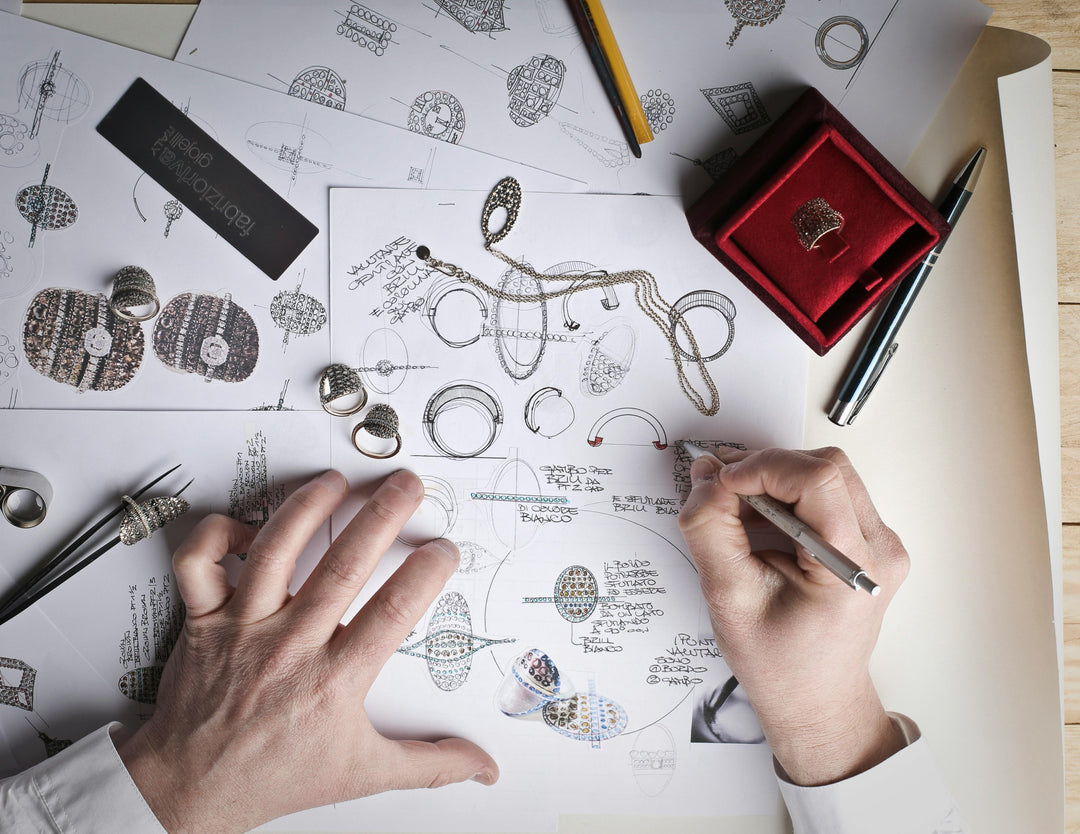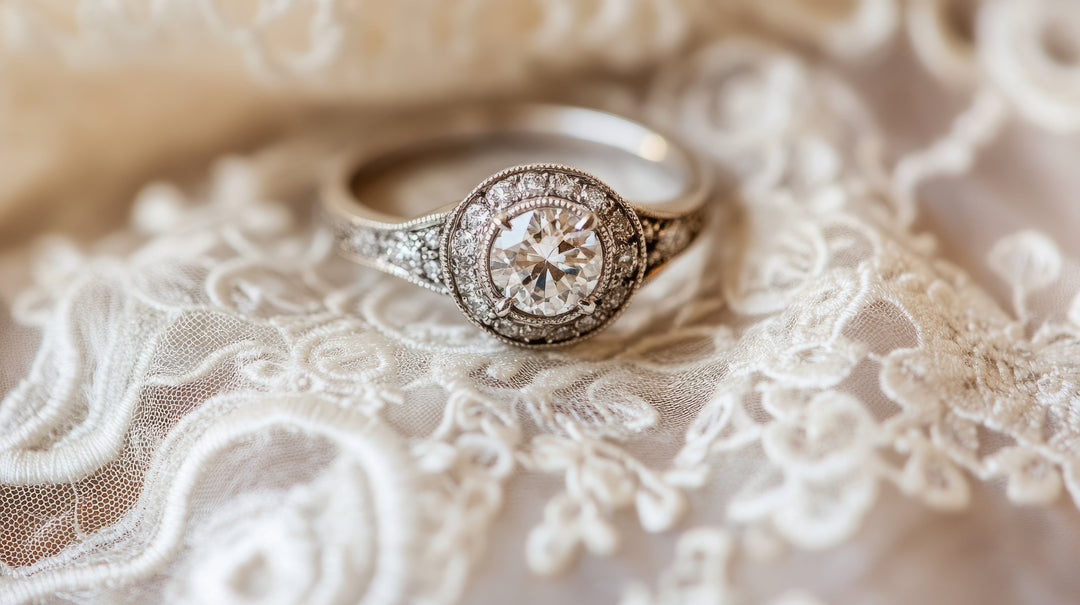Have you ever considered purchasing a lab-grown diamond? You may have heard them also referred to by other names such as “synthetic,” “cultured,” “man-made,” and many other labels. The name is exactly what it sounds like. It is literally a diamond made in a lab using processes invented by humans which mimic nature’s natural processes.
Lab-grown diamonds can be a bit controversial, as some people consider them a big departure from the traditional type of diamond that they are used to and that many have come to expect with jewelry. And that’s fair; change can be difficult, especially with a symbol that has come to represent the longevity and strength of love. I was wanting to take a deeper look into the history of diamonds, lab-grown diamonds, and some of the ways they compare. I’ve shared below some of the valuable information I was able to find.
There is no argument here that diamonds are a stunning and timeless adornment. “Mined diamonds are a miracle,” says Kristin Kerr of Nelson Coleman Jewelers. “They’ve been created deep within the earth by tons upon tons of pressure, and heat, before being brought to the surface by volcanic eruptions.” When put this way, it’s easy to understand the idea that diamonds are a miracle of nature and why they hold such a special place in people’s hearts.
What Are Lab Grown Diamonds?
Lab-created diamonds are just like any other diamonds in many ways, but the differences can be identified by their source. Diamonds grown inside a lab use cutting-edge technology to replicate the process of nature in order for these man-made gemstones to take on the image of their more expensive counterparts.
These diamonds are created using the same geological processes that occur deep beneath Earth's surface. They have identical chemical composition, physical properties and optical qualities as natural stones do – making them perfect for modern jewelry designs! They're not fakes or secretly cubic zirconia; lab diamonds have all the same physical and chemical properties as an earth-mined diamond.
A Brief History of Diamonds
The word “diamond” comes from the Ancient Greek word “adamas,” meaning invincible, indestructible, proper, and untamed. Diamonds are the hardest natural forming substance on earth, registering at a 10 on the Mohs scale. They were reported to have been first discovered about 3,000 years ago in India, but some reports claim they could have been discovered as early as 6,000 years ago.
Initially, they were highly prized for their ability to be used as a carving tool, but even in antiquity were also prized for their symbol as a stone of invincibility. They were reportedly worn by Greek warriors in battle and were allegedly used as a talisman by historical figures such as Julius Caesar, Louis IV, and Napoleon.
In 1772, it was discovered by Antoine Lavoisier that a diamond is carbon in its purest form. This discovery sparked decades of research into the possibility of creating a man-made diamond. Many researchers claimed to have synthesized a diamond, but it was not until 1954 that the first well-documented process called High Pressure High Temperature (HPHT) created a diamond with verifiable and reproducible results.
Origins of Lab Grown Diamonds
The first lab-grown diamond was made by H Tracy Hall of General Electric, after a decade and a half of trial and error. By jewelry standards, it was considered small and visually imperfect and could only be classified as an industrial diamond. But it was a synthetic diamond, nonetheless. It was not until 1971 that GE was able to successfully create the first gem-quality synthetic diamond.
Even if you didn’t count yourself as someone who knew much about diamonds before, you may have heard of the Four C’s. These are the four types of characteristics that are used to measure the quality and value of a diamond. Diamonds that do not scale high enough are generally used as industrial diamonds, which make up a majority of diamond use in the world.
When Mr. Hall first developed the HPHT process for synthesizing diamonds, he encountered pronounced issues with the color and clarity of his diamonds, making them only suitable as industrial diamonds. Many of his diamonds came out with yellowish to brownish tints, and had very visible inclusions of other elements, such as nickel.
Industrial diamonds are extremely valuable in their own way. They are also used in numerous computational, health care, and scientific applications. They are valued for their extreme hardness and heat conductivity and they can be crushed into micron-abrasive powders. But industrial diamonds were not the end-game goal of synthetic diamond production attempts.
Synthetic production of gem-stone quality diamonds became a reality with another kind of technology called Chemical Vapor Deposition (CVD). While CVD uses the same basic model as earth-created diamonds and HPHT, it is less costly than HPHT because it works at a moderate temperature and low pressure. The CVD technology concept was reportedly developed in the 1950s by the U.S. and Soviet Union, and at first could only produce industrial quality diamonds. With time, it has undergone such extensive improvements, it now boasts competitive quality with mined diamonds.
Synthetic Diamonds vs Natural Diamonds
With this advancement in technology, many people want to know if lab-grown diamonds are “real” diamonds? Is there a reason to care about them, or to consider buying them instead of a traditional earth-mined diamond?
Are Lab Grown Diamonds Real?
The answer to the first question is yes. Kristin Kerr assures that, “Their crystalline latus structure is identical. They’re both made of carbon and measure a 10 on the Mohs Scale. Aside from the laser inscription found on a lab-grown diamond’s girdle, they’re near impossible to distinguish what is lab and what is mined. It is even challenging for well-versed gemologists to know the difference – there are special instruments which aid in this distinction – and typically the types of inclusions that are present are what sets the two variations of diamonds apart.”
Multiple other sources confirm the same perspective, stating that while the origin is different for mined diamonds and lab-grown diamonds, their chemical and optical properties are identical. And despite the departure from traditional mined diamonds, the origin of lab-grown diamonds can be a huge advantage.
Quality & Cost
The answer to the second question involves considering a couple of different factors.
Because there is a high level of control possible in the CVD process, along with ever-improving technology, a nearly flawless diamond can be created in a matter of weeks. Depending on the technology used, CVD can produce diamonds in a time frame ranging from three to twelve weeks. No more waiting around for billions of years, because really, who has that kind of time?
Not only are you likely to get a more perfect, high-quality diamond, but you could be getting it at a lower cost. With the improvement of CVD technology to create lab-grown diamonds, the cost of production (and therefore the consumer lab grown diamonds price) declines. You’ll be getting more sparkle for your dollar.
Environmental Impact
Besides quality Lab Grown Diamond Wedding Bandand cost, there is also the environmental factor. “Choosing a lab-grown diamond is a fantastic way to live a little ‘greener’,” Kristin shares. Even though mined diamonds are the fascinating miracle of nature that they are, “the process required to retrieve them involves lots of heavy machinery, and displacing billions of tons of earth oftentimes to just find a small handful of gem-quality diamonds.”
Maybe you’re familiar with the movie Blood Diamond, which portrayed the reality of “conflict” or “blood” diamonds in war-torn Sierra Leone in the 1990s. It had a relatively large impact on public opinion about the ethics of mined diamonds at the time. In case you are a loyalist to mined diamonds, rest assured these conditions are not as widespread as they were in the 90s since the passing of the UN mandated Kimberley Process Certification Scheme (KPCS) which has enacted requirements to limit the trade of “conflict diamonds.” While the coalition of 82 countries has made meaningful progress in limiting the trade of “conflict diamonds,” lab-grown diamonds present an alternative that bypasses the issue entirely.
The Best Lab Grown Diamonds Are Made With Intention
Besides the level of quality, cost, and environmental/ethical considerations, Kristin Kerr pointed out something about lab-mined diamonds that sealed the deal for me.
“My favorite aspect of lab-grown diamonds is the intention with which they’re created. A lab-grown diamond is not a mistake, a coincidence, or a lucky happenstance. From their inception, to their growth, to the diamonds being presented; every step is done with intention. Relationships don’t just happen, whether they’re husband/wife, father/daughter, friends, or any other – they’re forged by the consistent and active choice to love one another. The process of growing a lab-grown diamond is an ongoing commitment that is consciously made. The gift of a lab-grown diamond is the gift of intentional love and commitment.”
While there is no essential difference in the make-up of a mined diamond and a lab-grown diamond, the one piece I could not get past at first was the origin.
My inner jewelry critic kept saying, “But it comes from a lab. That’s not romantic! I want a diamond that has been created in the depths of the Earth for a billion years that was potentially propelled to the surface by a volcano. That’s romantic, right?” It’s the traditional kind of diamond that represents indestructible longevity, and as Kristin stated, they are absolute miracles of nature.
But when I heard her perspective on the intentionality behind a lab-grown diamond, I couldn’t help but feel swayed by her words. A lab-grown diamond is just as pure (if not purer) than a mined diamond, has the same levels of indestructibility and longevity, and it was intentionally created. Of all the meaningful symbolism in the giving of a diamond, intention would be one I would be honored to add to the list. Because she’s right; the purest, longest, and strongest relationships we forge with one another are chosen intentionally every day.
Where to Buy Lab Grown Diamonds
The next time you are interested in purchasing diamond jewelry as an engagement ring, wedding band, anniversary piece, or just because you love diamonds, consider asking about our lab-grown diamond selection. Nelson Coleman is one of the best places to buy lab grown diamonds. We’ll be happy to match you up with the perfect piece!




